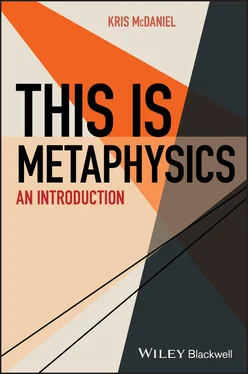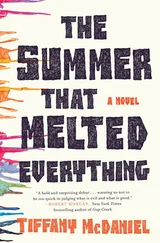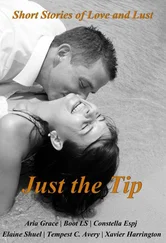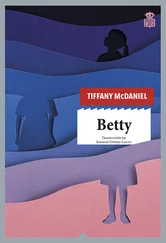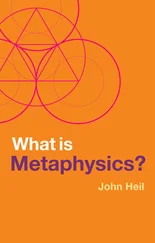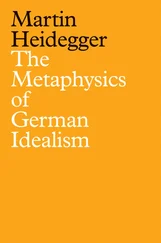1.35 Here’s a second example. You notice that whenever you drop something heavy on your bare foot, like a laptop computer, it hurts quite a lot. You also notice that whenever you drop lighter things on your bare foot, such as a shoe or a pencil, it hurts a lot less. On the basis of these observations, you conclude that heavier things falling on bare feet tend to hurt more than lighter things falling on bare feet. (You should probably also conclude that you need to wear shoes more often.) You definitely believe this conclusion: were you forced to choose between dropping a feather on your foot or a piano, you know which one you’d choose. But you haven’t observed every possible object that could be dropped on your foot in order to assess how painful that experience would be. You are prepared to form a very general belief on the basis of a very limited number of observations, and you take yourself to be perfectly rational in doing this.
1.36 The general pattern of reasoning we seem to be using in these situations is the following. Whenever we encounter a sufficiently large sample of things that each have a certain feature F, and each member of this sample also has the feature G, we generalize and believe that all things that have F also have G. Philosophers call this kind of reasoning “inductive generalization,” and the method of deriving conclusions in this way, “induction.” It’s hard to see how we can get by in the world if we aren’t justified in believing the conclusions of inductive generalizations. How do I know that this bread will nourish me rather than cause me to explode? Because every time I have sampled bread in the past, it has nourished me rather than caused explosions. My sample size is limited but I nonetheless conclude that I’ll be ok next time I have a sandwich.
1.37 So far, so good. But now we are ready to consider the following puzzle, due originally to a philosopher by the name of Nelson Goodman, called “the New Riddle of Induction.” 10 Once we see how the puzzle works, we’ll be able to define “projectable.”
1.38 Here we go. Let’s think about emeralds. Emeralds have lots of features. Some emeralds are pretty. Some emeralds are covered in dirt, and some emeralds will probably never be seen by anyone, at least not during our lifetimes. Some emeralds have been visually inspected by us, or at least will be, during our lifetime. Let’s say that something is grue if and only if it is either both inspected by us during our lifetime and is green, or it is blue but not inspected by us during our lifetimes. (As you can probably guess, “grue” is another word in the gruesome language.) Because the idea of grue is a little complicated, it’s good to read that definition a couple of times, and then work through some examples. All the emeralds in a jewelry store were visibly inspected by someone during your life and they are green—and so they are also grue.
1.39 Here’s the new riddle of induction. We haven’t seen absolutely all of the emeralds in the world. Yet we have seen a large sample of them. And all of the ones that we have seen have been green. So now we are ready to make an inductive generalization: since we have seen a sufficiently large sample of emeralds, and all of these emeralds are green, we infer that all emeralds are green. However, notice this. All of the emeralds we have seen are also grue. So, we’ve observed the exact same number of grue emeralds as we have green emeralds. So, we should also be willing to make a second inductive generalization: given that all of the emeralds that we have seen are grue, and we have seen a heck of a lot of emeralds, we should be willing to infer that all emeralds are grue too. So, as the result of inspecting the same sample of emeralds, we conclude both that all emeralds are green and that all emeralds are grue.
1.40 The problem is that the claim that all emeralds are green is incompatible with the claim that all emeralds are grue, since there are emeralds that we have never seen and that won’t be observed during our lifetime. Consider an unobserved emerald, which I will call “Eddy.” If all emeralds are green and all emeralds are grue, Eddy is both green and grue. But no one has or will observe Eddy in our lifetime. So, Eddy can’t be green and observed in our lifetime. Since Eddy is grue, and not green and observed in our lifetime, it follows that Eddy must be blue and not observed in our lifetime. So, Eddy is blue. But just a moment ago we said Eddy is green. Nothing can be both blue and green at the same time. So, the same sample set and the same method of forming more general beliefs from that sample set led to inconsistent results. Not good. That’s the puzzle of the new riddle of induction.
1.41 What seems plausible then is that we shouldn’t indiscriminately make inductive inferences. It is ok to infer from our sample size that all emeralds are green. It is not ok to infer from that same sample that all emeralds are grue, even though every emerald in that sample is both green and grue. Don’t believe that whenever we encounter a sufficiently large sample of things that each have a certain feature F, and everything that has F also has another feature G, we should generalize and so believe that all things that have F also have G. Instead, consider something more complex and careful. Only some of those Fs and Gs are ones that license inductive inferences. We are finally ready to define “projectible”: an expression is projectable if and only if it stands for a feature that we can justifiably make inductive inferences about. “Green” is plausibly a projectable expression, but if it is, then “grue” can’t also be projectable.
1.42 But what makes an expression a projectible expression? One answer to this question is that an expression is projectible to the extent that the expression corresponds to objects that objectively belong together. If this is the correct answer, we also have an argument that some objects objectively belong together. The argument is this. We are sometimes justified in making inductive inferences. But we are sometimes justified in making inductive inferences only if some of the words we use to make those inferences are projectible. And those words are projectible only if they classify objects that objectively belong together. So, some objects objectively belong together.
1.5 Two Questions about Classification
1.43 I hope that we now have a decent enough grip on the distinction between what I have called “subjectively belonging together” and “objectively belong together” that we can proceed to ask some interesting questions about this idea of things objectively belonging together. Let’s now turn to two of the most important general questions.
1.44 I want to distinguish the question of what it takes for some things to objectively belong together from the question of which things objectively belong together . Both questions are important questions, and knowing the answer to one could help us learn the answer to the other. But the answers to these questions are by no means guaranteed to be the same.
1.45 The first question, the one that asks “What does it take for some things to objectively belong together?,” is an example of a type of question that philosophers are prone to ask. The type of question of which this first question is an instance is “What does it take for a thing to be X?” where X is some feature that a thing could have. Here are some other examples of this type of question: “What does it take for a belief to count as knowledge?”; “What does it take for an action to be one that we morally ought to do?”; and “What does it take for an action to be done freely?” Let’s briefly think about one of these questions so that we can get a feel for this type of question in general. We’ll focus on the first one, the question of what it takes for a belief to count as knowledge.
Читать дальше
